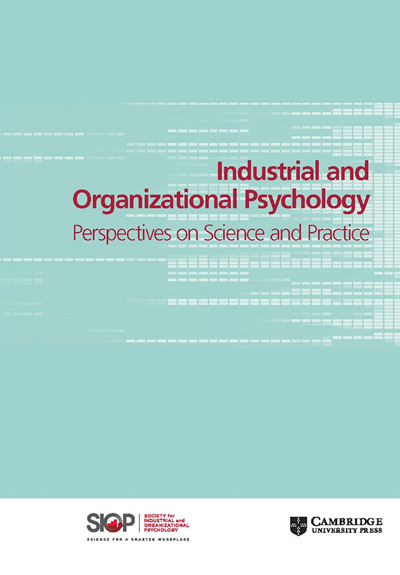Maternal wall biases and the maybe baby effect
IF 4.3
3区 心理学
Q1 PSYCHOLOGY, APPLIED
Industrial and Organizational Psychology-Perspectives on Science and Practice
Pub Date : 2023-05-09
DOI:10.1017/iop.2023.3
引用次数: 0
Abstract
Gabriel and colleagues ’ (2022) focal article addresses how academia ’ s culture surrounding tenure, career success, and promotions can cause women scholars to question if they can simultaneously have both a successful career and a family. Balancing both a fulfilling career and family life has been an ongoing issue for women in all industries. Not only can this balancing act itself hinder career opportunities for women, but as the authors point out, a lack of support, toxic attitudes, and biased perceptions regarding pregnant women and mothers in the workforce can create additional career obstacles. Interestingly, recent research suggests that pregnancy-related biases may extend beyond even currently pregnant women or mothers, and may also apply to women who might simply be perceived as soon becoming pregnant (e.g., Gloor et al., 2018; Gloor et al., 2021). This has been coined the “ maybe baby effect. ” The maybe baby effect proposes that the assumed like-lihood of a young woman soon becoming pregnant increases employers ’ perceptions of accom-panied inconvenience (i.e., maternity leave) while decreasing perceptions of the woman ’ s job commitment (Gloor et al., 2018). The maybe baby effect can be traced back to the “ maternal wall ” phenomenon, which embodies the different forms of discrimination and biases working mothers or pregnant employees experience in the workplace or while trying to enter the workforce (Williams, 2004). The maternal wall differs from the glass ceiling 1 because it specifically pertains to biases that occur because of a woman ’ s parental or pregnancy status, and not because of other gender-based biases. The article by Gabriel and colleagues speaks to general maternal wall issues within academia. In this commentary, we expand upon Gabriel et al. (2022) maternal wall concerns by discussing the maybe baby effect and how it might adversely impact women within the academic work setting.母亲墙偏见和可能的婴儿效应
Gabriel及其同事(2022)的焦点文章探讨了学术界围绕任期、职业成功和晋升的文化如何会让女性学者质疑她们是否能同时拥有成功的职业和家庭。平衡充实的职业和家庭生活一直是各行各业女性面临的一个持续问题。这种平衡行为本身不仅会阻碍女性的职业机会,而且正如作者所指出的,缺乏支持、不良态度以及对孕妇和职场母亲的偏见可能会造成更多的职业障碍。有趣的是,最近的研究表明,与妊娠相关的偏见甚至可能延伸到目前怀孕的妇女或母亲之外,也可能适用于那些可能只是被认为即将怀孕的妇女(例如,Gloor等人,2018;格洛尔等人,2021)。这被称为“也许婴儿效应”。也许婴儿效应提出,年轻女性即将怀孕的假定生活会增加雇主对随之而来的不便(即产假)的看法,同时降低对女性工作承诺的看法(Gloor等人,2018)。也许婴儿效应可以追溯到“母亲墙”现象,它体现了职业母亲或怀孕员工在工作场所或试图进入职场时所经历的不同形式的歧视和偏见(Williams,2004)。母亲墙不同于玻璃天花板1,因为它特别适用于因女性父母或怀孕状况而产生的偏见,而不是其他基于性别的偏见。Gabriel及其同事的这篇文章谈到了学术界普遍存在的母亲墙问题。在这篇评论中,我们扩展了Gabriel等人(2022)对母亲墙的担忧,讨论了可能的婴儿效应,以及它如何在学术工作环境中对女性产生不利影响。
本文章由计算机程序翻译,如有差异,请以英文原文为准。
求助全文
约1分钟内获得全文
求助全文
来源期刊

Industrial and Organizational Psychology-Perspectives on Science and Practice
PSYCHOLOGY, APPLIED-
CiteScore
7.70
自引率
10.10%
发文量
85
期刊介绍:
Industrial and Organizational Psychology-Perspectives on Science and Practice is a peer-reviewed academic journal published on behalf of the Society for Industrial and Organizational Psychology. The journal focuses on interactive exchanges on topics of importance to the science and practice of the field. It features articles that present new ideas or different takes on existing ideas, stimulating dialogue about important issues in the field. Additionally, the journal is indexed and abstracted in Clarivate Analytics SSCI, Clarivate Analytics Web of Science, European Reference Index for the Humanities and Social Sciences (ERIH PLUS), ProQuest, PsycINFO, and Scopus.
 求助内容:
求助内容: 应助结果提醒方式:
应助结果提醒方式:


